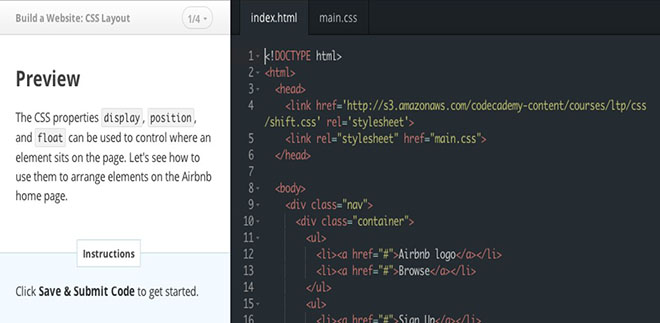Adult Learning Courses with VR: Enhance the Learning Experience
Updated Sept 11, 2023 - Gini Beqiri
The landscape of adult education is undergoing a seismic shift, driven by the relentless march of technology. From the emergence of Generative AI to the realms of Virtual Reality (VR), Augmented Reality (AR), and the tantalizing prospects of the Metaverse, these innovative technologies are reshaping how we approach learning in our increasingly digital world.
Education in a changing world
We've witnessed technology transform every facet of our lives, from how we travel, shop, and communicate to the very jobs available to us. However, one area that has been slow to catch up with these technological changes is education, specifically adult learning.
While we've transitioned from traditional classrooms to online learning, the fundamental structure of education has remained largely unchanged.
Understanding the key technologies
Let's delve into the unique characteristics of these transformative technologies:
Virtual Reality (VR):
- Immersive: VR creates a completely digital environment, immersing users in a computer-generated reality.
- Experience-Based Learning: Ideal for experiential learning, users can practice skills and scenarios in a risk-free, virtual world.
- Isolation: VR often isolates users from the physical world, offering an immersive, standalone experience.
Augmented Reality (AR):
- Blends Real and Digital: AR overlays digital content onto the real world, enhancing the user's perception of reality.
- Contextual Information: Useful for providing real-time information and enhancing the understanding of physical surroundings.
- Connection to Reality: AR maintains a connection to the physical world, as users view digital elements within their real environment.
The Metaverse:
- Virtual Universe: The Metaverse envisions a collective virtual shared space, merging physical and virtual realities.
- Societal Interaction: It's a space for social interaction, collaboration, and a wide range of experiences.
- Persistent and Evolving: The Metaverse is persistent, evolving, and driven by user-generated content.
Generative AI:
- Content Creation: Generative AI is focused on creating content, from text to images, using algorithms and models.
- Creative Assistance: It assists in content generation by offering suggestions, automating tasks, and enhancing creativity.
- Not a Virtual Environment: Generative AI doesn't create immersive virtual environments but enhances content creation and user experiences in various digital realms.
This article will focus on the transformative potential of VR learning. The benefits of VR for adult education are revolutionary, with its unique blend of experiential learning and accessibility poised to disrupt traditional learning systems.
Benefits of VR in adult learning courses
Virtual reality has the power to bring learning to life and make the whole experience more enjoyable; VR could be the effective, engaging literacy tool the adult learning industry has been waiting for.
Massive open online courses (MOOCs) such as those offered by Coursera and Udacity have become incredibly popular over recent years. In 2015 alone, 35 million people signed up for an online course.
What is the most effective way to learn?
Hundreds of years ago, most skills were learnt through experience. You would do an apprenticeship or similar training to learn the skills by performing that task many times over and learning on the job.
Recently, with the advancements of the internet and online training courses, more people than ever are learning online by watching online tutorial videos and reading how-to-guides.
However, we still learn and retain the most information when we get to practice what we learn. Studies have shown that, on average, learning through experience increases retention by between 75-90%.
Combining MOOCs and VR
Clearly there is a demand for accessible learning. But what if MOOCs and VR were combined? You could be taught in a classroom or lecture theatre by an expert or practice what you are learning, all from the comfort of your own home. Instead of imagining a scenario or reading case studies to apply your knowledge, you could actually live it.
Learning with VR is the ideal learning method to build students’ confidence. There’s no embarrassment if you don’t understand something the first time, or if your peers grasp concepts more quickly - you learn and practice at your own pace.

The ability to practice in VR makes it unique - imagine being able to make mistakes, learn from them, and try again, without any real-world consequences.
This is especially useful for soft skills such as:
- Presentation skills
- Building interpersonal relationships
- Sales pitching
- Interacting with the media
- Crisis communications
VirtualSpeech provide online courses combined with interactive practice exercises and feedback within their VR app, so that students have the most thorough, accessible learning experience possible.
Accessible tools
And most people already own the most expensive tool required for adult learning courses with VR - a smartphone. An estimated 70-75% of adults who need literacy support have access to a smartphone, and that figure is even higher for more complex skills.
This means that millions of people can access high quality learning with a device they already own, and they would just have to purchase a VR headset for as little as $25. This also makes it a more accessible way to learn because adult learners can fit their education around their full-time job, without having to pay thousands of dollars or sacrifice large chunks of their time going to a learning centre.
Discover how the VirtualSpeech platform can help you reach your professional development goals up to 4x faster.
Learn with online classes, practice in VR
We believe VR is the most effective, safe, and affordable way to combine experiential learning with traditional online learning. They form the perfect partnership because many people don’t want to be in the virtual world for long periods of time, and it can be difficult to read text within a VR headset.
That’s why a combination of online tutorials and virtual reality works so well. You can spend 60% of your time learning soft skills with online classes, then 40% actually practicing what you have learnt.
Online tutorials and guides are used to teach techniques and theory, while VR is used to practice and reinforce what has been learnt in the online training course.
Technical vs. soft skills courses
Technical skills courses
There are plenty of amazing resources for learning technical skills online. What’s great with many of them is that you can practice what you’ve learnt through exercises and projects as a more practical way of learning. Sites like Codecademy give you a brief description of a topic and let you reinforce your learning by writing code related to that topic. Thus, you’re effectively learning on the job and more likely to retain the information.

Codecademy lets you learn through practice by coding different projects in the web browser.
Soft skill courses
Business skills such as sales, negotiation and communication, are much harder to improve through practice. You might have to attend an expensive in-person workshop to practice these skills or learn while you’re at work - no doubt making costly mistakes along the way
Traditional business online courses include tutorial videos, articles and quizzes. However, without practicing what you’ve learnt, you’ll have forgotten over 95% of this material after 30 days.
Example: Public Speaking hybrid course
Our public speaking course was designed using years of learning from our VR application. We've covered all the essential areas of public speaking with online tutorial videos, case studies, articles, and after learning the fundamentals, participants can practice these topics in virtual reality.
For example, you’ll learn how to cope with common distractions, such as mobile phones ringing, bright stage lighting, and audio feedback through our training videos. Then you’ll put on a VR headset and practice what you’ve been taught while giving a speech in a virtual conference room.
The content is split between traditional videos, quizzes etc, and VR practice:
Traditional learning (online classes)
- Tutorial videos
- Articles
- Quizzes
- Case studies
- Role play exercises
VR practice
For the public speaking course, we focussed on several VR scenarios to enhance the online classes:
- Eye contact training and connecting with the audience
- Sound and visual distractions training
- Impromptu speeches and thinking on the spot
- Speech insight analysis
- Speaking in a lecture hall
- Answering audience questions
Future of adult learning
As the technology progresses, we’ll likely see lectures being delivered in the virtual world, which would be costly to attend in the real world but practically free with VR. This could change the landscape of universities too.
The potential for this transition can already be seen with Engage, an educational platform that allows 30 users/ students into a virtual environment at one time. If it’s easier for people to access and ultimately a more efficient to learn virtually then what does this mean for higher education as we know it today?
Adult learning courses could be the stepping stone to widespread adoption of VR in education. By providing a safe, accessible, and affordable environment for students to learn through experience, VR has the potential to totally transform adult learning.


